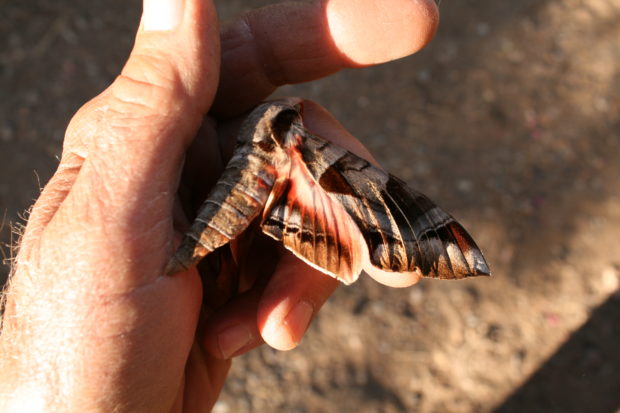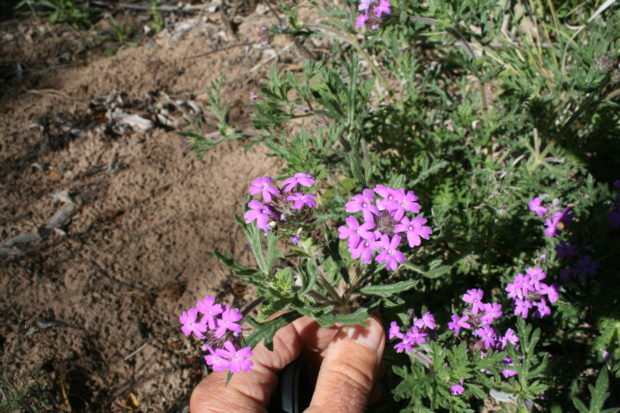Eumorpha typhon or the Typhon sphinx moth is out and about from June to August in the borderlands. I realized very quickly that we had everything the nectar loving adults need at our little homestead. Our planted Agave palmeri may bloom sometime over the next several years, but we have an abundance of Datura wrightii that bloom every year all summer long. So those are the for the adults. Years ago I planted several canyon grapes (Vitis arizonica) and as it turns out that is the larval food of these hawk moths. Yay!
The Latinized name Eumorpha is a combination of two Greek words and means beautiful form. The specific epithet typhon is from the Greek for whirlwind or it could be a reference to Typhon, the father of monsters in Greek mythology. I like whirlwind…yeah, that makes more sense. Listen, as near as I can figure the common names of sphinx moth and hawk moth are synonymous. When I was a little boy I learned them as hummingbird moths. A good reason for scientific names and no matter the common names they are all placed in the family Sphingidae. Phew!

The photos are mine of the dried up specimen I found in our barn. That’s Buster helping out on my desk. The antennae are broken off, but you can see the amazing colors and patterns on the wings. Below I’ve included a link to a nice description of hawk moths and Eumorpha. I noticed that Stephen Buchmann’s name is misspelled, so here it is spelled correctly. You may want to find his books.
https://www.fs.fed.us/wildflowers/pollinators/pollinator-of-the-month/hawk_moths.shtml


Dear listeners, I wrote and produced this show in 2019, so it’s a Re-Petey. I’m using old shows right now as I isolate at...

Our one flowering wildflower on this wonderful day was the pretty perennial called penny cress or candy tufts. It is the former Thlaspi fendleri,...

There are many nations and languages found in the borderlands. The photos are mine.